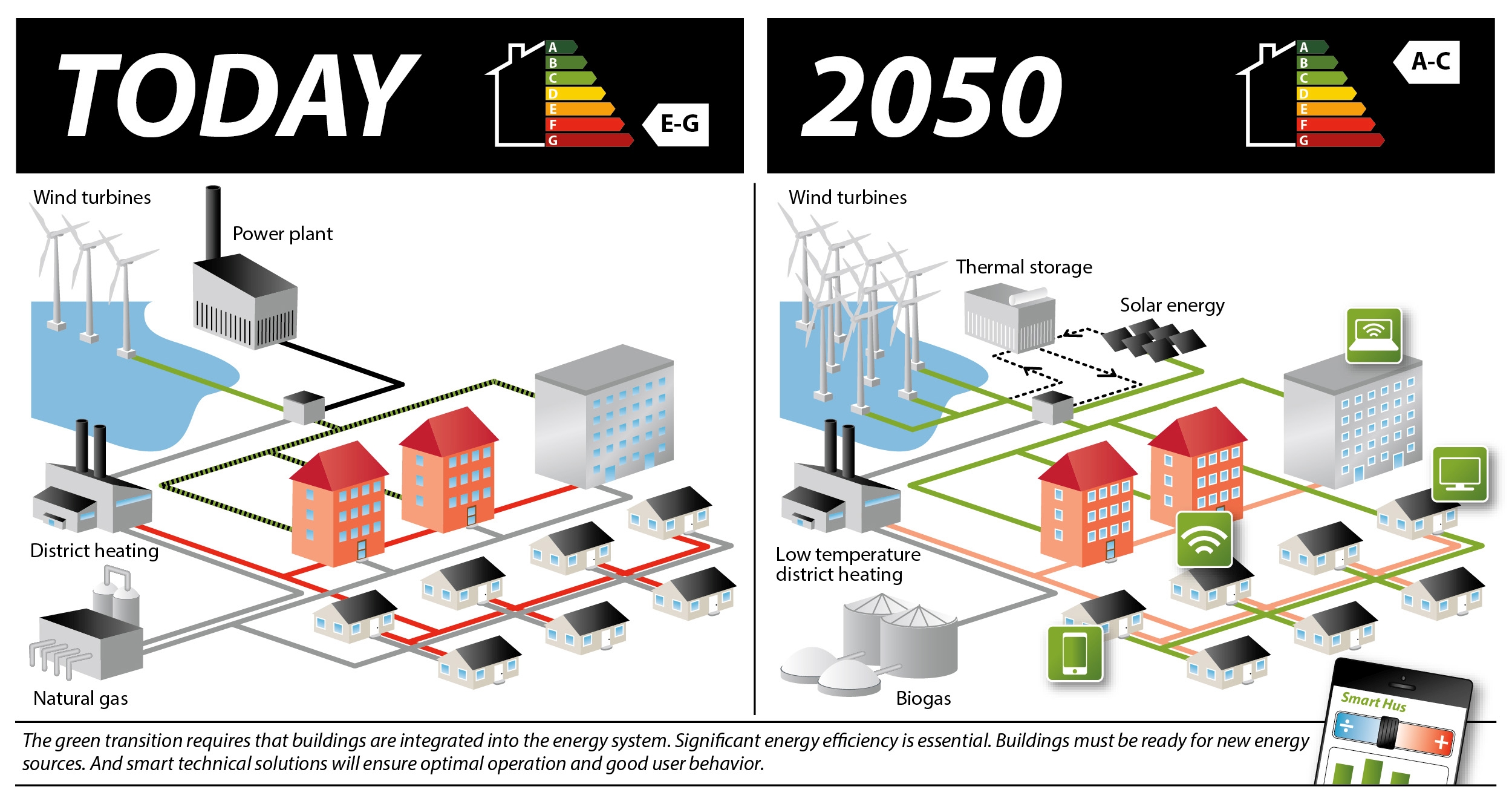Report: Buildings play a large role in renewable energy future
A new report launched today sets the spotlight on the big role of buildings in the transition towards 100% renewable energy in Denmark. The report “Future Green Buildings – A key to Cost-Effective Sustainable Energy Systems”, prepared by researchers at Aalborg University, describes the contribution and role of the building sector in a 100% renewable energy future, as well as the transitions that are necessary in the building sector to support this change.

The researchers conlude that energy refurbishment needs to have a much higher priority for existing buildings. District heating should be expanded further to replace individual boilers and new supply systems with lower temperature district heating from solar thermal, large‐scale heat pumps, geothermal, waste incineration, and biogas should be supported. Outside district heating areas they recommend efficient ground‐source heat pumps supplemented with solar thermal.
“Electricity and heat savings in buildings really are both important going towards large-scale renewable energy systems. And savings are more important than flexibility on the building level,” said Brian Vad Mathiesen, main author of the report and Deputy Head of 4DH.
Buildings use 41% of energy demand
Today, buildings account for around 41% percent of the total end‐use energy demand in Denmark. This constitutes mainly heating, hot water and electricity demands in appliances and cooling. With such a large use of resources in buildings, reductions in electricity and heat demands as well as changes in the energy supply are essential for a cost‐effective future 100% renewable energy system. Recommendations to conduct energy savings and support behavioural changes in the operation of buildings go hand in hand with supply level recommendations.
The report builds on a literature review encompassing more than 50 reports and research papers over the last 10 years and more than two decades of knowledge about the interactions between different components of the energy sector. The review has been focused on aspects such as cost‐effective solutions from an energy system integration perspective, heat savings, electricity savings, and user behavioural aspects as well as energy storage and household level flexibility.
The report has been commissioned by the Danish partnership ”Renovering på dagsordenen” (Renovation on the Agenda), and partially financed by 4DH and the CITIES project.
Tweet